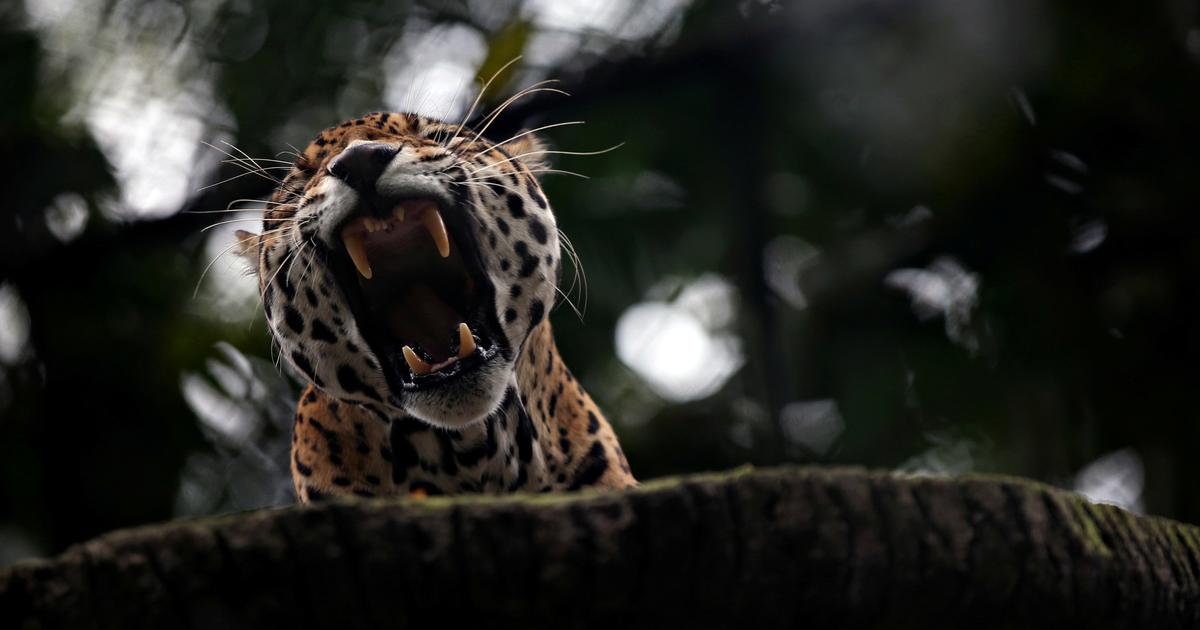The jaguars of Latin America are poached for their meat, teeth, bones, genitals and skin, according to an investigation by two environmental organizations.
The International Union for Conservation of Nature in the Netherlands (IUCN) and Earth League International (ELI), a group that tracks wildlife crime using intelligence techniques, conducted undercover investigations that revealed the
modus operandi
of the traffickers and the methods of transportation, routes and geographical access points.
Studies show that the demand for jaguar parts comes from Asia
and, in general, its traffic is driven by Chinese citizens in Bolivia
.
"The Chinese ascribe medicinal powers to the parts of the jaguar and often wear their fangs in jewelry that symbolizes social status," explains Andrea Crosta, co-founder of ELI.
“
Our team was shown hundreds of jaguar teeth for sale.
They explained to us that larger tusks are preferred to small ones, due to the need to carve them, "he added.
From 2018 to 2020, both organizations investigated criminal networks that target the illegal trade in jaguars, a species that the IUCN classifies as "near threatened."
The jaguar is the only member of the
Panthera
family
in the Americas and is by far the largest feline on the continent.
Scientists estimate that there are between 130,000 and 208,000 jaguars left in the wild, the majority concentrated in the Amazon basin.
In the case of Bolivia, experts estimate that there are between 2,000 and 3,000 jaguars in the wild,
but an increase in the killing of this species has been detected.
In 2019, various environmental spokesmen denounced the absence of seizures of parts of the jaguar in Bolivia, which raised suspicions of inaction on the part of the country's authorities.
“The jaguar is a species that is very important to conserve because it is key within the ecosystems where it lives.
It regulates other species that inhabit it,
”said Angela Núñez, a consultant in Bolivia and one of the authors of the report.
"American tigers"
According to the research, jaguars suffer from a double threat: the fangs and parts of the jaguar are trafficked
per se
, but also as substitutes for tiger canines due to their large size.
In fact, in China, jaguars are known as the "American tigers."
“The low availability of tiger parts in Asia, combined with growing demand in East and Southeast Asia and the increased Chinese presence in Latin America, appears to have
created a 'perfect storm' that triggered an increase in the traffic of jaguar parts. to China,
”the report says.
ELI's investigation reveals that sophisticated criminal organizations are driving the acquisition and trafficking of jaguars.
The people identified by this organization have strong transnational networks that allow them to smuggle, without major problems, parts of the jaguars as well as all kinds of illegal goods from South America to China.
Goods are generally transported by plane, with people carrying them in suitcases or on their bodies.
The investigation identified three criminal gangs operating in Bolivia that are involved in the trafficking of jaguar parts, including the
Putian Gang, which is the South American branch of the Fujian Mafia, a Chinese organized crime group.
However, it is not only a problem in Bolivia.
From Mexico to Argentina, various environmental and wildlife protection organizations have denounced the increase in poaching of jaguars throughout the species' geographic range.
"I suspect it went unnoticed for a long time because the authorities just weren't paying attention
," Pauline Verheij, an independent wildlife crime specialist, told The New York Times.
"In most Latin American countries, tackling wildlife crime has been a zero priority until very recently," he added.
Africa as a precedent
For many experts, this situation is reminiscent of the crisis of poaching for rhinoceros horns and ivory tusks from elephants in sub-Saharan Africa.
Rapidly increasing demand in China prompted many Asian citizens in Africa to establish sophisticated schemes to smuggle rhinoceros horn and ivory to East and Southeast Asia, taking advantage of weak governance, corruption and poverty.
A decade after the market opened, systematic poaching on an industrial scale decimated the populations of African elephants and rhinos.
This analogy serves as a stark warning that shows the speed at which a species can be on the brink of extinction when a consumer market opens.
Profit margins certainly provide an incentive:
A jaguar canine costs about $ 100 to $ 200 in Bolivia, while that tooth can be sold for more than $ 1,500 in China and Vietnam
, where they are used for jewelry work.
Although Bolivia has legislation in place for the protection of its wildlife and the issue of jaguar trafficking is on the radar of government agencies, the effective response has been hampered by failure to enforce the laws.
In addition, there is a highly bureaucratic government structure that makes effective collaboration difficult, and corruption proliferates at
land
borders
and airports through which the systematic smuggling of wildlife occurs.
With information from IUCN, ELI and The New York Times

